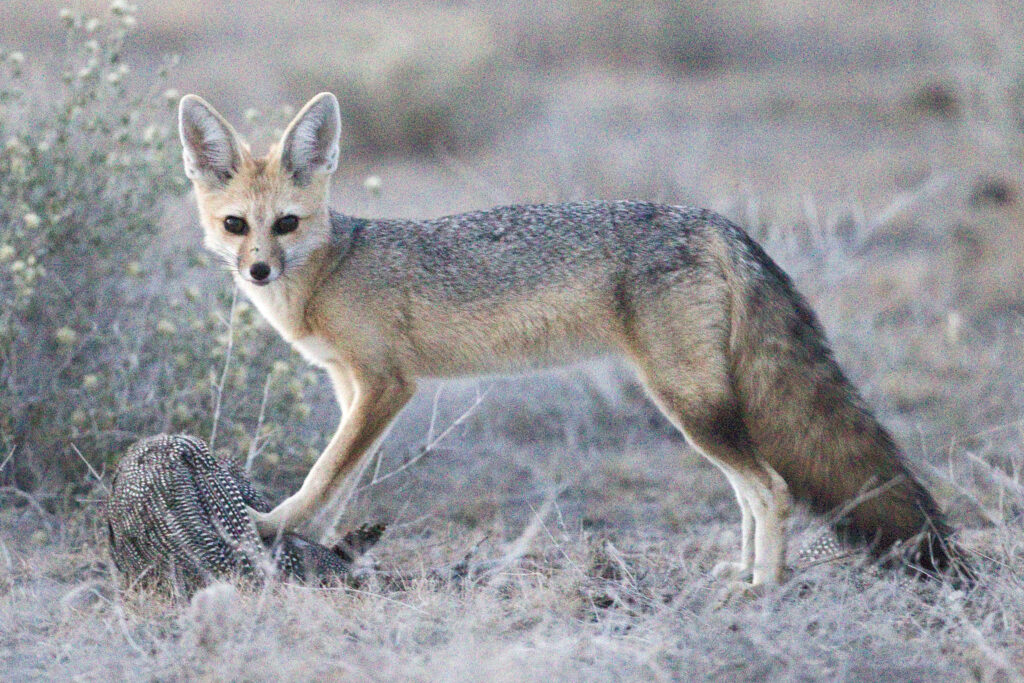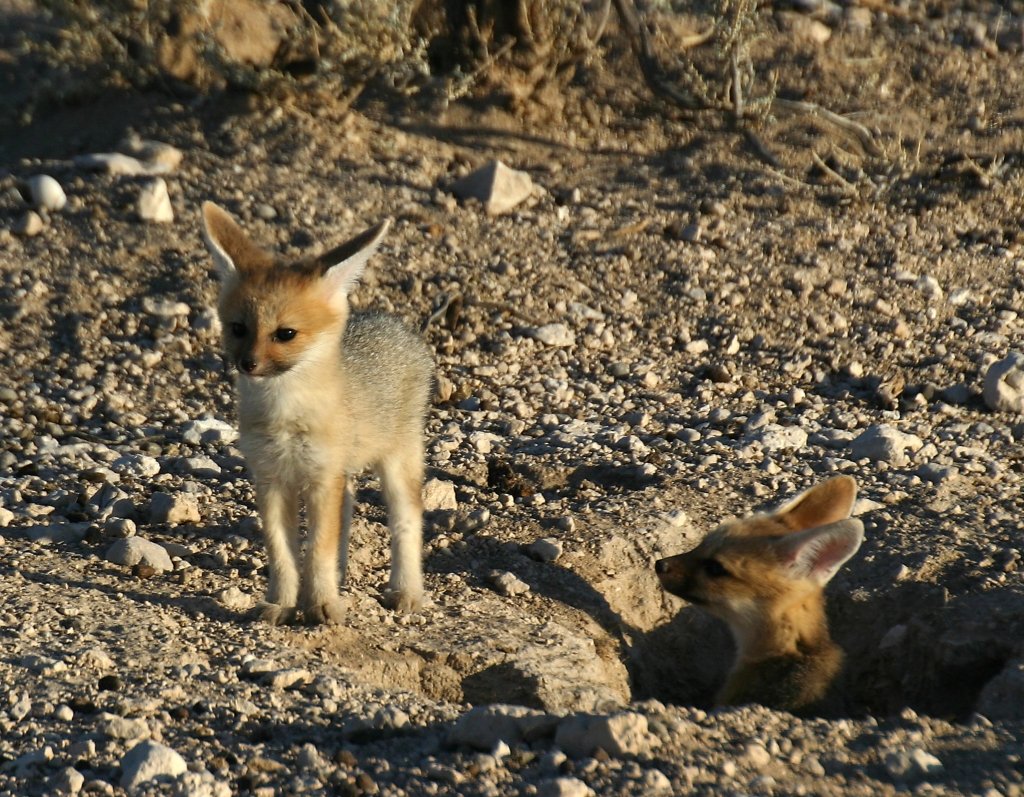

Common Name: Cape Fox
Scientific Name: Vulpes chama
Conservation Status: Least Concern (Hoffmann, 2014).
Habitat: Open country landscapes such as grasslands, semi-arid deserts, and lightly wooded areas (Hoffmann, 2014).
Range: Central and western regions of southern Africa, and to the south-west where it reaches the Atlantic and Indian Ocean coastlines (Hoffmann, 2014).
Diet: Rodents, rabbits, insects, beetle larvae, and small reptiles. This species is also known to scavenge and feed on livestock (Rohde, 2003).
Threats: Habitat loss/changes are not a major factor influencing the conservation status of the Cape Fox unlike many other fox species as changing agricultural practices and the expansion of semi-arid karroid vegetation have actually resulted in range extensions of this species. The use of illegal yet widespread agricultural poisons represents the greatest threat to Cape Fox populations (Stuart, 1981; Stuart & Stuart, 2013).
